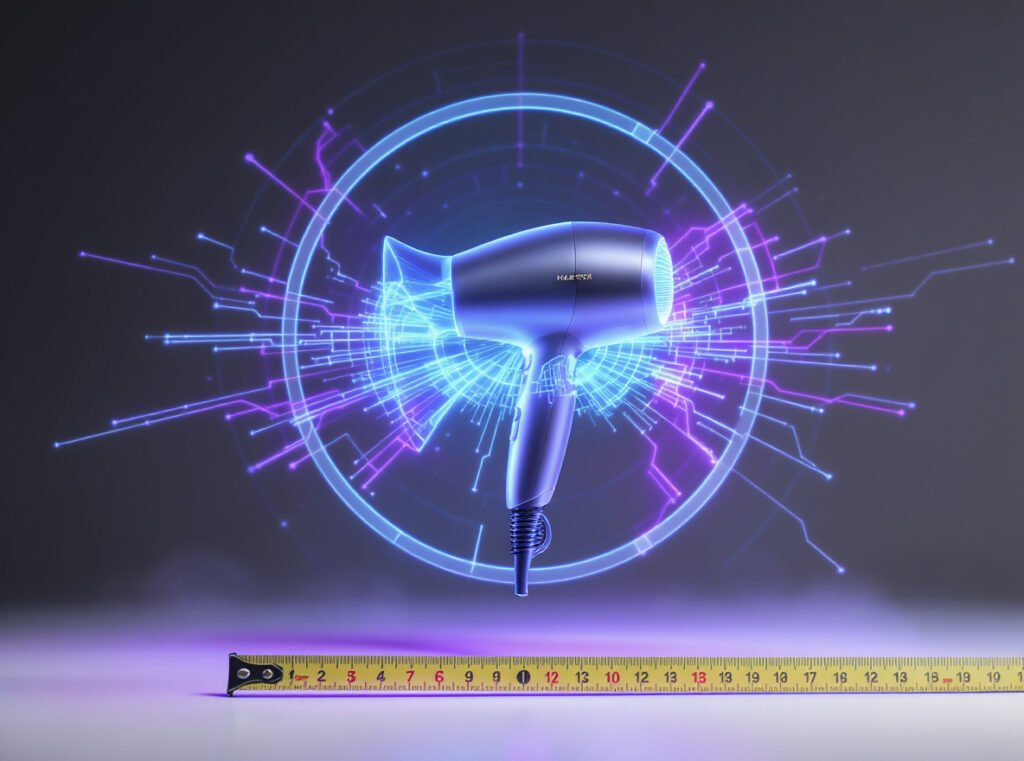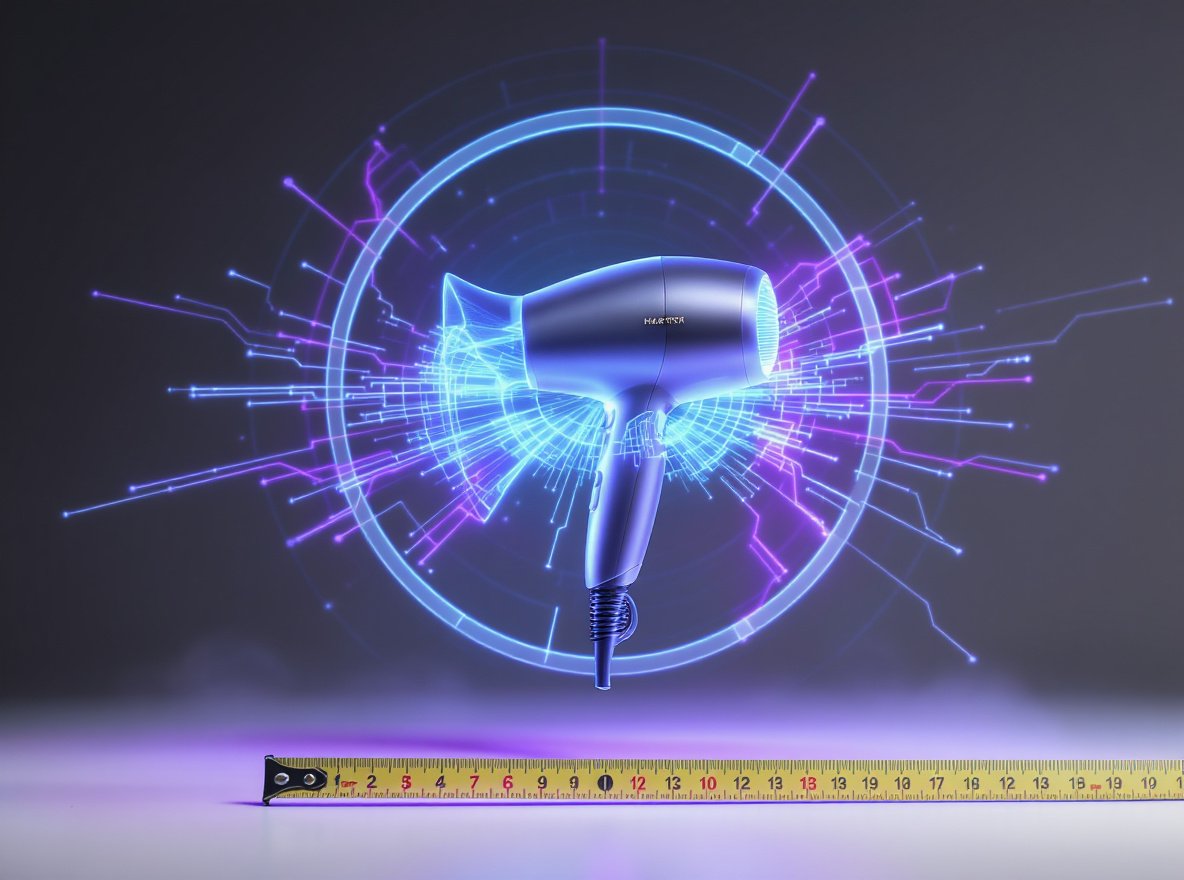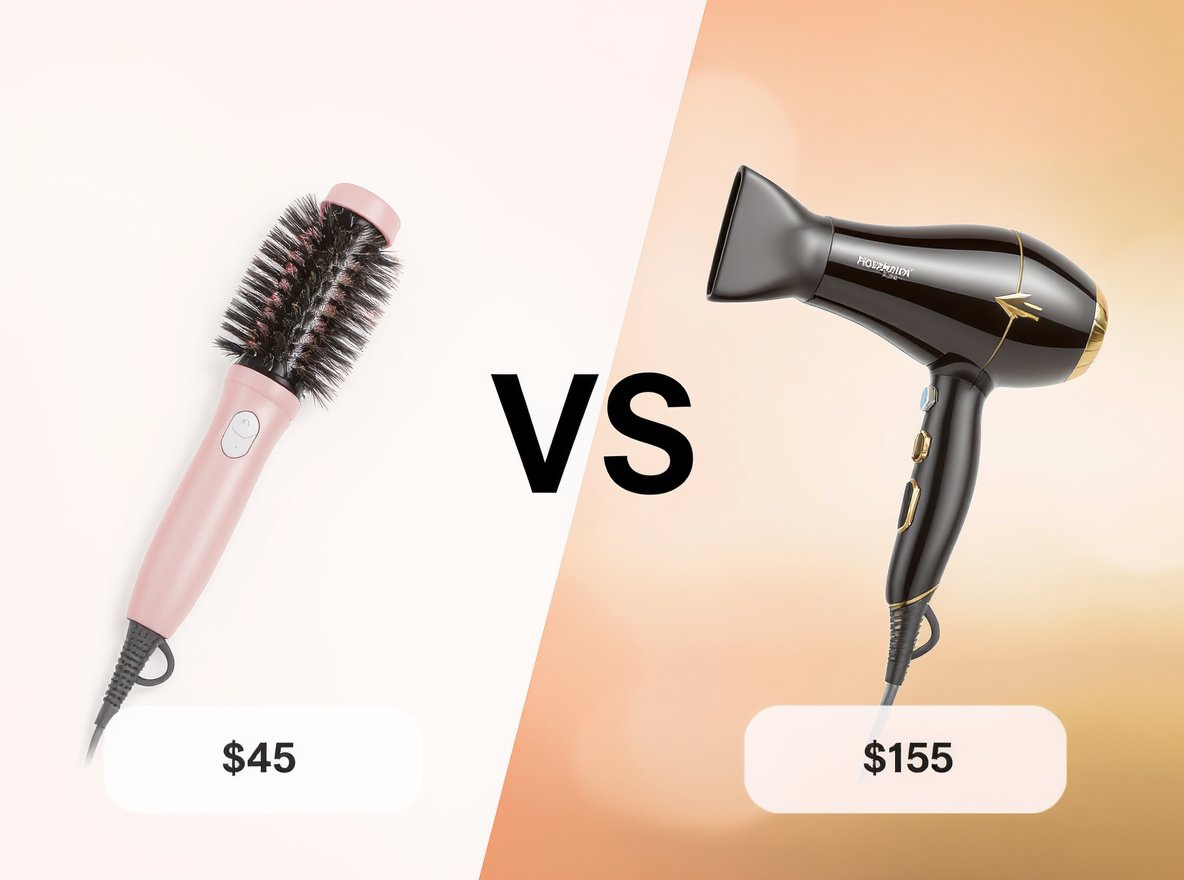You reach for your hair dryer every morning, but have you ever wondered about the invisible electromagnetic fields it generates? With growing concerns about EMF exposure from everyday appliances, it’s natural to question whether your daily styling routine could pose health risks.
Yes, hair dryers emit extremely low frequency (ELF) electromagnetic fields at 60 Hz. They are among the highest EMF-emitting household appliances, producing magnetic fields of 60-20,000 milligauss within 4 inches of the device. However, EMF strength decreases dramatically with distance—dropping to 1-70 mG at 12 inches and 0.1-3 mG at 39 inches—making distance your most effective protection strategy.
Let’s explore what these measurements mean for you, your customers, and the wholesale market.
Table of Contents
ToggleWhat Type of Electromagnetic Fields Do Hair Dryers Emit?
Understanding the specific radiation your hair dryer produces helps you answer customer concerns with confidence and scientific accuracy.
Hair dryers generate extremely low frequency (ELF) electromagnetic fields at 60 Hz—the same frequency as household electrical power. These devices emit both electric and magnetic field components, with magnetic fields being the primary health concern since they cannot be easily shielded and penetrate most materials, including human tissue.
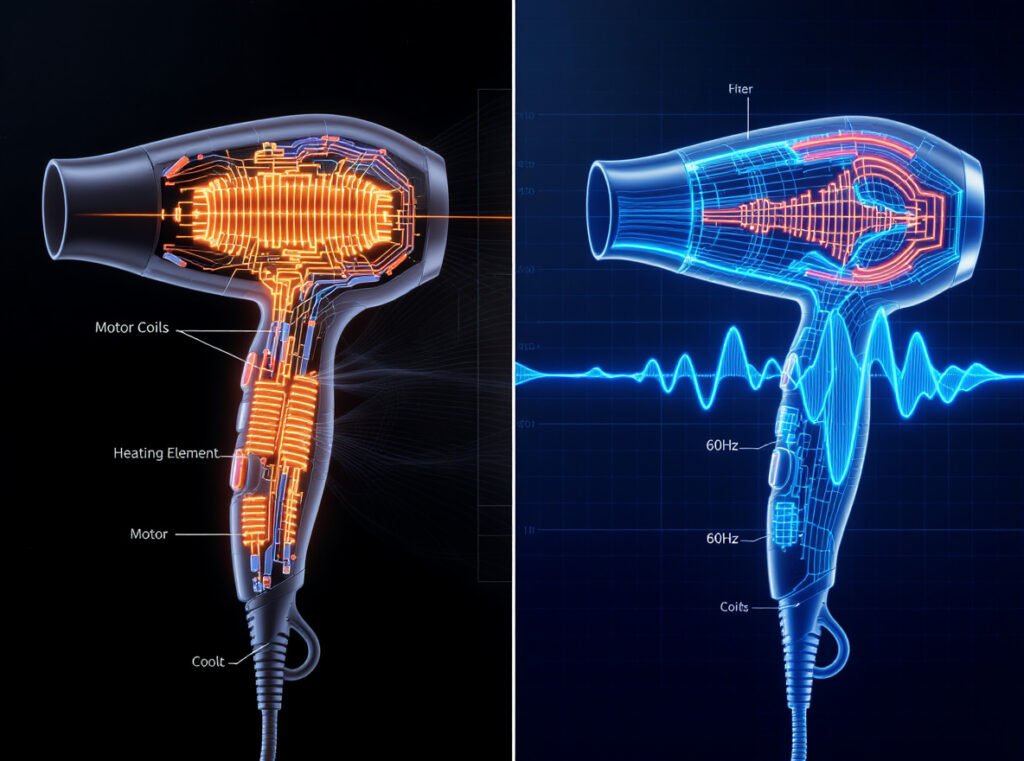
The electromagnetic emissions operate at the fundamental frequency of your electrical grid. In North America, that’s 60 Hz; in Europe and most other regions, it’s 50 Hz. This places hair dryers in the ELF-EMF category, distinct from radiofrequency radiation (like cell phones) or ionizing radiation (like X-rays).
Why magnetic fields matter more than electric fields:
Electric fields are generated whenever a device is plugged in, even when switched off. They’re measured in volts per meter and can be blocked by walls, skin, and most materials. Magnetic fields, however, only exist when current flows through the device—meaning when it’s actually operating. These fields pass through virtually everything, including building materials and human bodies.
Hair dryers produce particularly strong magnetic fields because they draw high current to power both heating elements and motors simultaneously. A typical 1800-2000W dryer pulls 15-16 amps of current, creating substantial electromagnetic activity within the device housing.
The emission sources within your hair dryer include:
- Heating coils: Resistance elements drawing heavy current
- Motor windings: Creating rotating magnetic fields for fan operation
- Power cord: Conducting high current along its entire length
- Internal wiring: Connecting components with unshielded conductors
Background household EMF levels typically range between 0.1-4 milligauss. Hair dryers can produce magnetic fields thousands of times stronger than these ambient levels when operated at close range.
How Strong Are EMF Emissions from Hair Dryers Compared to Safety Standards?
Raw numbers provide context, but understanding how they relate to proposed safety guidelines helps you communicate risks appropriately to wholesale clients and their customers.
Hair dryers produce magnetic fields of 60-20,000 milligauss at 1.2 inches from the device, decreasing to 1-70 mG at 12 inches and 0.1-3 mG at 39 inches. These close-range levels significantly exceed the EPA’s proposed safety standard of 1 mG and Sweden’s established maximum limit of 1 mG. Some experts recommend exposure limits as low as 0.5 mG for optimal health, though no mandatory federal limits exist in the United States.
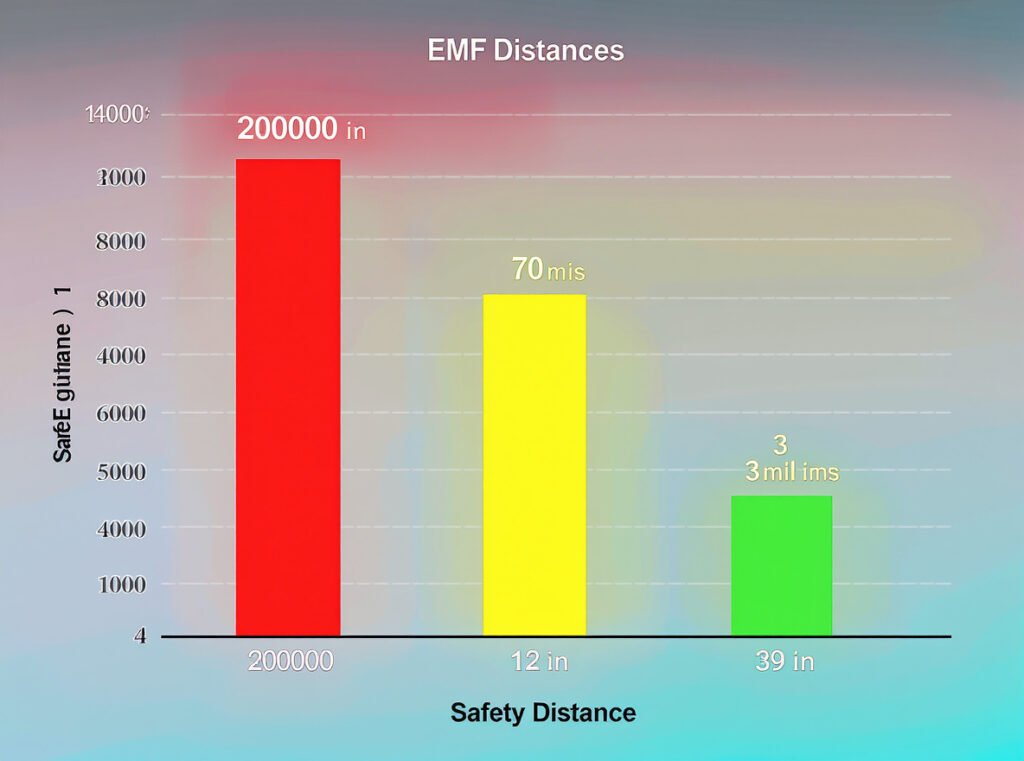
| Distance from Device | Magnetic Field Range | Safety Context |
|---|---|---|
| 1.2 inches (motor/nozzle) | 60-20,000 mG | Exceeds all proposed guidelines |
| 12 inches (typical arm distance) | 1-70 mG | Near or above recommended limits |
| 39 inches (body distance) | 0.1-3 mG | Approaches background levels |
These measurements reveal why distance matters so dramatically. The inverse square law governs electromagnetic field strength—doubling your distance reduces exposure by approximately 75%. Tripling the distance cuts it by roughly 90%.
Understanding proposed versus mandatory standards:
The EPA suggested a cautionary level of 1 mG in the 1990s but never established it as a regulatory requirement. Sweden has implemented 1 mG as an actual standard for new construction near power lines. Some EMF researchers advocate for even more conservative thresholds of 0.5 mG based on epidemiological studies.
However, the U.S. federal government has established no mandatory EMF exposure limits for consumer appliances. OSHA has not created permissible exposure limits for occupational settings either. This regulatory vacuum means hair dryer manufacturers face no legal requirements to minimize EMF emissions or disclose field strength.
International variation creates complexity for wholesale markets. European countries generally show more regulatory concern about EMF exposure than North America. Products marketed in health-conscious regions may benefit from documented low-EMF specifications even without legal requirements.
Higher wattage models typically generate stronger electromagnetic fields. Professional-grade 1800-2000W dryers produce more intense emissions than 1200-1400W consumer models. The power required for rapid drying directly correlates with current flow, which determines magnetic field strength.
Are There Any Health Risks Associated with Hair Dryer EMF Exposure?
Your customers will ask about health implications—providing balanced, evidence-based information builds trust and positions you as a knowledgeable supplier rather than just a product vendor.
The International Agency for Research on Cancer (IARC) has classified extremely low frequency EMFs as “possible human carcinogens” (Group 2B). Research has documented that 60 Hz magnetic field exposure at levels as low as 100 milligauss for 24 hours caused significant DNA damage in rat brain cells, including both single and double strand breaks. However, the World Health Organization maintains that current evidence remains insufficient to establish definitive health risks from typical consumer appliance use.

The scientific consensus reflects ongoing investigation rather than settled conclusions. Unlike tobacco or asbestos where causal links to disease are firmly established, ELF-EMF health effects remain in the “suggestive but not conclusive” category.
Research findings warrant attention:
DNA Damage Studies
Laboratory research demonstrated that exposure to magnetic fields at 100 mG for 24-48 hours caused measurable DNA damage in rat brain cells. The damage included single strand breaks (relatively easy to repair) and double strand breaks (harder to repair and more likely to cause mutations). Effects increased with longer exposure duration.
Cellular Mechanism
Researchers hypothesize that EMF exposure initiates an iron-mediated process increasing free radical formation in brain cells. This oxidative stress leads to DNA damage and increases both apoptosis (programmed cell death) and necrosis. The mechanism may be particularly relevant for hair dryers held close to the head during use.
Neurological Effects
Studies indicate that prolonged exposure to low-level magnetic fields can affect brain cell function. Research documented increased brain cell death markers following extended EMF exposure, suggesting potential cumulative effects from repeated use.
Important contextual factors:
The rat study used continuous 24-48 hour exposure at 100 mG. Typical hair dryer use involves 5-15 minutes daily at varying field strengths depending on distance. Direct comparison requires careful consideration of exposure duration, intensity, and frequency differences.
The IARC classification system provides perspective. Group 2B (“possible carcinogen”) includes coffee, pickled vegetables, and working night shifts. It indicates limited evidence of carcinogenicity in humans and sufficient evidence in experimental animals. This differs from Group 1 (“carcinogenic to humans”) which includes tobacco, processed meat, and UV radiation.
Current epidemiological evidence has not identified elevated cancer rates, neurological disorders, or other health conditions specifically linked to hair dryer use in consumer populations. Professional salon workers represent a different exposure scenario addressed in a later section.
Electromagnetic hypersensitivity (EHS) remains controversial. Some individuals report symptoms from EMF exposure, but controlled scientific studies have not validated this as a diagnosable medical condition. Regardless, customer concerns deserve respectful responses focused on practical risk reduction strategies.
What Factors Affect EMF Emissions in Different Hair Dryer Models?
Not all hair dryers emit equal EMF levels—understanding these technical variables helps wholesalers make informed sourcing decisions and address customer specifications effectively.
EMF emission intensity varies based on power rating, motor type, heating element design, and internal shielding quality. Higher wattage models (1800-2000W) typically generate stronger electromagnetic fields than lower-powered units. AC motors generally produce higher EMF than DC motors, while brushless motor designs offer the lowest emissions. Internal construction materials and component grounding significantly affect field leakage levels.
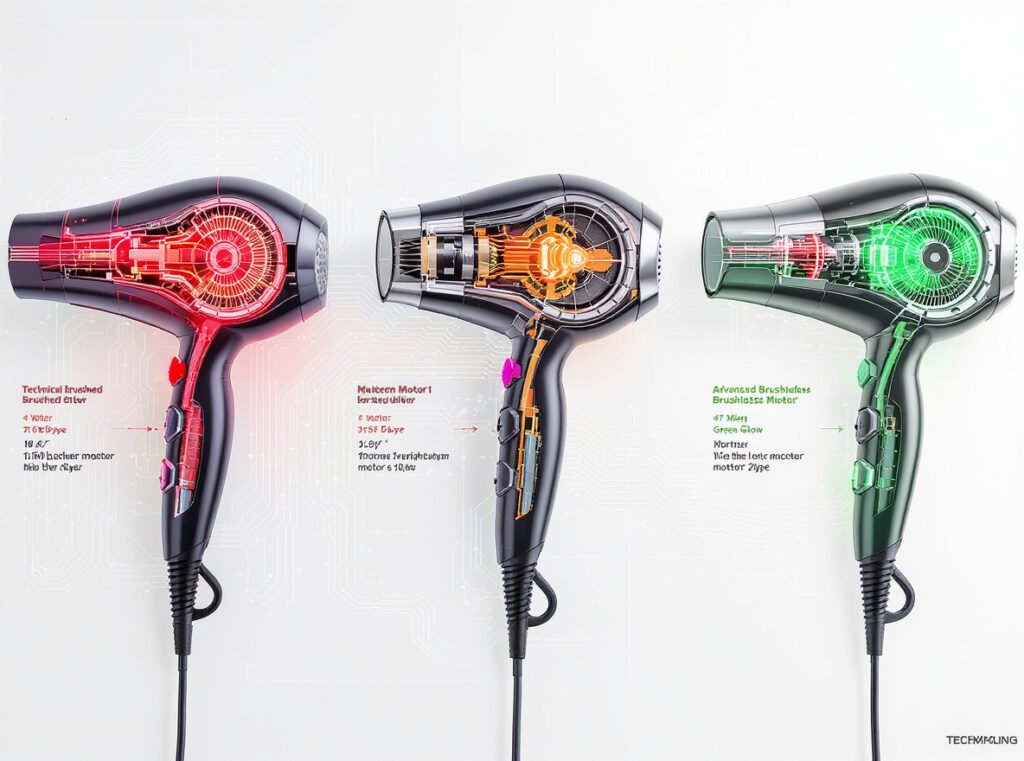
Power rating represents the most straightforward predictor:
A 1200W hair dryer draws approximately 10 amps of current at 120V. An 1800W model draws 15 amps—50% more current creating proportionally stronger magnetic fields. Professional-grade 2000W units maximize power for rapid salon drying but consequently produce the highest EMF levels in typical product lineups.
Motor technology creates substantial differences:
Traditional AC Motors
Conventional alternating current motors use mechanical brushes and commutators. The brush contact creates electrical arcing that generates electromagnetic interference. These motors operate at lower efficiency, requiring more current to produce equivalent power output. Most budget and mid-range dryers use AC motor technology.
DC Motors
Direct current motors eliminate brushes, reducing one source of electromagnetic interference. They typically run more efficiently than AC motors, drawing less current for similar performance. Mid-range to premium dryers increasingly adopt DC motor designs.
Brushless DC Motors (BLDC)
Modern high-speed dryers utilize digitally controlled brushless motors that operate at significantly higher efficiency. Their compact design, optimized power management, and elimination of mechanical brush interference typically result in 30-50% lower EMF emissions at comparable distances. These represent the current premium technology in hair dryer design.
Design elements affecting EMF output:
- Heating element configuration: Tightly coiled resistance wires generate more concentrated fields than distributed ceramic or tourmaline elements
- Internal shielding: Strategic placement of conductive materials redirects electromagnetic fields away from external surfaces
- Component spacing: Physical separation between motor and handle reduces exposure at grip points
- Grounding quality: Proper electrical grounding affects field distribution and leakage
- Power cord design: Twisted pair wiring minimizes field propagation along cord length
Technology features with EMF implications:
Ionic Technology
Ionic generators add minimal EMF load but may enable faster drying at lower heat settings, indirectly reducing overall exposure time. The ionic generation itself produces negligible electromagnetic fields compared to motor and heating elements.
Infrared Heating
Infrared heating elements can reduce EMF compared to traditional resistance coils while improving heat distribution. However, not all infrared dryers show lower emissions—implementation quality matters more than technology label.
Ceramic and Tourmaline Elements
These materials provide more even heat distribution than bare metal coils. They may permit lower wattage operation for equivalent drying performance, indirectly reducing EMF. However, they don’t inherently shield or reduce electromagnetic fields.
Build quality correlates imperfectly with EMF performance. Premium models investing in advanced motor technology and engineering typically produce lower emissions. However, some high-end professional dryers prioritizing maximum power may actually emit stronger fields despite superior construction.
Testing methodology complicates direct comparisons. Manufacturers measure at different distances, power settings, and locations on the device. Without standardized protocols, published specifications require careful interpretation.
How Can Consumers Reduce EMF Exposure While Using Hair Dryers?
Providing practical safety guidance builds customer confidence and demonstrates product expertise that differentiates quality suppliers from basic distributors.
The most effective EMF reduction strategy is maximizing distance between the dryer and head. Magnetic field strength follows the inverse square law—doubling the distance reduces exposure by approximately 75%. Holding the dryer at arm’s length, using diffuser attachments (adding 4-6 inches), and pointing the nozzle at hair rather than scalp can reduce exposure by 80-90% compared to close-range use.
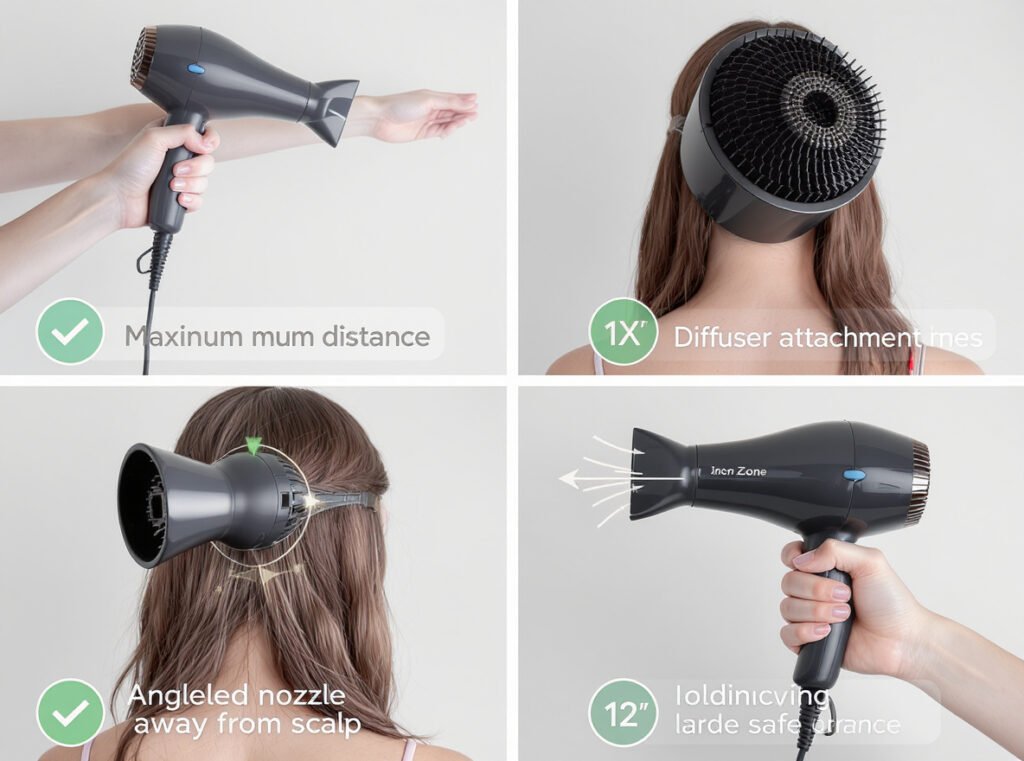
Distance-based strategies deliver measurable results:
- Extend your reach: Hold the dryer as far from your head as comfortably manageable while maintaining styling effectiveness
- Use diffuser attachments: These accessories add physical distance while improving heat distribution for curly or textured hair
- Angle strategically: Direct airflow at hair strands, not toward the scalp or skull where the brain sits
- Stand farther from outlet: If cord length permits, increase overall distance from power source
Duration reduction complements distance management:
- Towel-dry thoroughly first: Removing excess water before applying heat shortens overall dryer operation time
- Air dry partially: Allow hair to dry 50-70% naturally before using the dryer for finishing
- Use lower heat settings: Gentler heat may take slightly longer but reduces both EMF exposure duration and thermal damage
- Employ cool shot features: Finish styling with cool air rather than continuous high-power heat
Behavioral modifications for daily users:
- Alternate styling methods: Rotate between blow-drying, air-drying, and other techniques rather than defaulting to the dryer daily
- Section strategically: Work in organized sections rather than repeatedly passing over the same areas
- Avoid extended continuous use: Take brief pauses during longer styling sessions
- Turn off between sections: Switch the device off rather than leaving it running during pauses
For salon professionals managing cumulative exposure:
- Maintain professional distance: Working at arm’s length from clients naturally creates protective distance
- Position consciously: Stand to the side rather than directly behind clients when possible
- Rotate tasks throughout the day: Alternate between cutting, coloring, and drying rather than consecutive dryer sessions
- Invest in lower-EMF equipment: Professional models with brushless motors provide long-term protection
Product selection represents another mitigation layer. When sourcing inventory for health-conscious markets, prioritize models with documented lower EMF emissions through advanced motor technology and quality construction.
The Conason P1C high-speed hair dryer features brushless digital motor technology that significantly reduces electromagnetic field strength while delivering professional-grade performance. Its intelligent design maximizes distance between motor components and handle grip areas, and efficient power management minimizes unnecessary current draw. View technical specifications.
Do Professional Salon Workers Face Greater EMF Exposure Risks?
Your salon distributor clients need specific information about occupational exposure—addressing these concerns proactively strengthens business relationships and demonstrates industry expertise.
Professional hairdressers face significantly elevated EMF exposure compared to typical consumers due to extended daily usage. Beauty salon workers may operate hair dryers for 3-6 hours during busy workdays, and salons typically have 10-15 dryers operating simultaneously, creating cumulative ambient exposure. A 2005 OSHA communication acknowledged that salon workers may face exposure levels well above general public recommendations, though no specific occupational limits have been established.
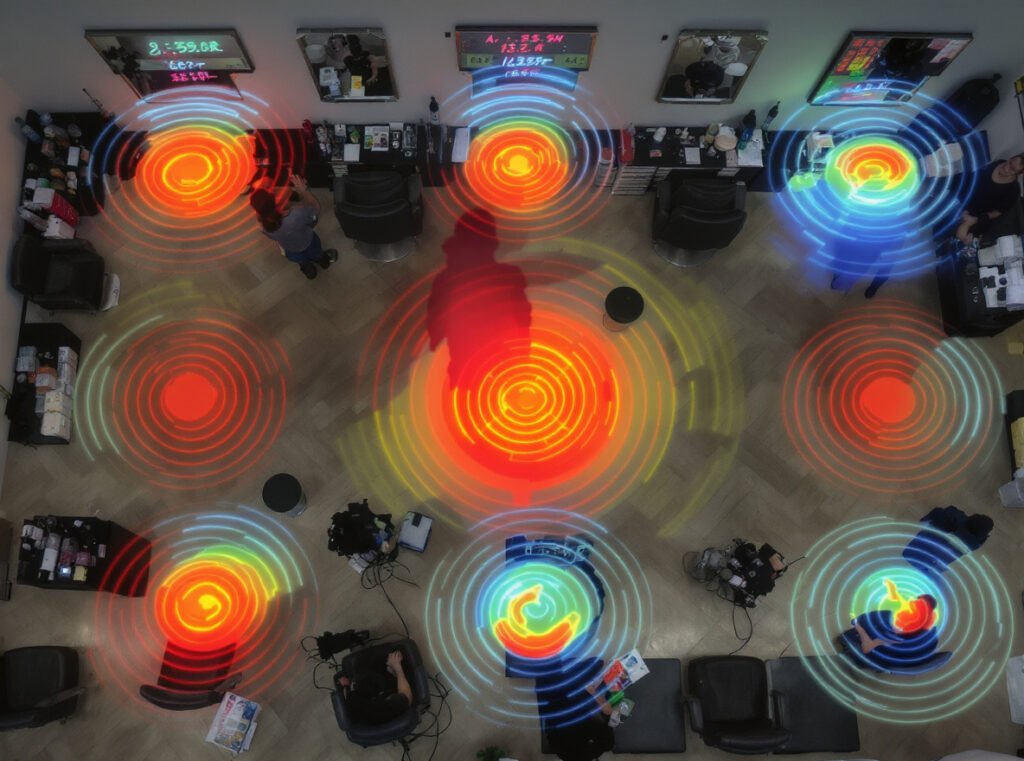
Professional exposure contexts differ fundamentally from consumer scenarios:
| Usage Pattern | Daily Exposure Time | Weekly Cumulative | Distance Factors |
|---|---|---|---|
| Typical Consumer | 5-15 minutes | 35-105 minutes | Close to own head (1-6 inches) |
| Professional Stylist | 180-360 minutes | 900-1800 minutes | Arm’s length from clients (12+ inches) |
| Salon Owner/Multiple Staff | Ambient exposure | Continuous ambient | Distance from multiple units |
The occupational exposure equation involves multiple factors:
Individual Client Sessions
Each blow-dry service may take 15-30 minutes. A busy stylist completes 8-15 such services daily, accumulating substantial direct handling time. While working at arm’s length provides some protection, field strength at 12 inches (1-70 mG) still exceeds recommended continuous exposure guidelines.
Ambient Salon Environment
Professional salons operate multiple dryers simultaneously throughout business hours. The cumulative electromagnetic field from 10-15 devices creates elevated ambient levels throughout the workspace. While individual contribution from distant dryers remains small, the combined effect increases background exposure.
Cumulative Long-Term Effects
Unlike consumers using dryers occasionally, professional stylists face decades of daily exposure. The potential for cumulative cellular effects from repeated EMF exposure—as suggested by DNA damage research—creates unique occupational health considerations.
OSHA’s position reflects regulatory uncertainty:
The 2005 OSHA communication acknowledged EMF exposure concerns in salon environments but explicitly stated that no established exposure limits exist for this application. OSHA has not developed permissible exposure limits (PELs) for electromagnetic fields in any occupational setting, leaving employers without clear regulatory guidance.
Current epidemiological evidence has not identified elevated health risks among salon professionals specifically attributable to hair dryer EMF exposure. The profession carries other documented health concerns—chemical exposure from hair treatments, repetitive stress injuries, prolonged standing—but EMF-related conditions lack established patterns in occupational health data.
Practical risk management for salon environments:
- Adequate ventilation: While not affecting EMF directly, improved air quality benefits overall working conditions
- Modern equipment rotation: Upgrading to low-EMF dryers reduces individual and ambient exposure
- Ergonomic technique: Proper arm positioning protects against repetitive strain while maintaining optimal EMF distance
- Workstation spacing: Separate dryer stations reduce ambient exposure from multiple simultaneous units
- Task rotation: Alternating between cutting, coloring, and styling naturally varies exposure sources throughout the day
For wholesale buyers serving salon markets, offering low-EMF options addresses legitimate occupational health concerns without overstating scientifically unproven risks. Position these features as professional wellness investments rather than urgent safety requirements.
Professional models represent significant capital investments for salon owners. Demonstrating long-term value through reduced EMF exposure, improved energy efficiency, and enhanced durability justifies premium pricing for advanced technology.
What Should Wholesalers Know About EMF Standards and Product Claims?
Navigating the regulatory landscape helps you source compliant products and communicate honestly with your distribution networks while avoiding potential liability issues.
Currently, no specific EMF emission limits exist for hair dryers in the United States. Hair dryers must comply with FCC Part 15 electromagnetic interference standards (preventing interference with other devices) and UL 859/UL 1727 electrical safety standards, but these focus on electrical hazards rather than EMF health limits. International variations exist, with some European countries showing greater regulatory attention to EMF exposure, though mandatory hair dryer limits remain uncommon.

The regulatory framework includes these key elements:
FCC Part 15 Compliance
Federal Communications Commission regulations require that hair dryers not cause harmful electromagnetic interference with radio communications, television reception, or other electronic devices. This addresses interference prevention, not health protection. Compliance testing measures radiated and conducted emissions at radiofrequency ranges, distinct from the 60 Hz ELF-EMF health concerns.
UL Electrical Safety Standards
UL 859 and UL 1727 establish safety requirements for household hair dryers focusing on:
- Electrical shock prevention
- Fire hazard mitigation
- Mechanical safety (immersion protection, cord integrity)
- Thermal safety (overheating prevention)
These comprehensive safety standards do not address magnetic field strength or EMF exposure limits.
International Regulatory Variations
European markets generally show heightened awareness of EMF issues, though specific mandatory limits for hair dryers remain rare. Some countries have established guidelines for continuous residential exposure (Sweden’s 1 mG standard for new power line construction) but haven’t extended these to appliances.
Marketing claims require careful substantiation:
Scientifically Indefensible Claims
- “Zero EMF” or “EMF-free” — Physically impossible for any electric device
- “Blocks all harmful radiation” — Overstates scientific certainty about harm thresholds
- “Medically proven safe” — Requires legitimate clinical evidence; absence of proven harm differs from proven safety
- “Prevents cancer risk” — No device can make disease prevention claims without FDA approval
Appropriate Positioning Statements
- “Reduced EMF emissions compared to conventional models” — Factual if testing supports it
- “Advanced motor technology minimizes electromagnetic field strength” — Describes technical features
- “Low-EMF design for health-conscious consumers” — Addresses market positioning without health claims
- “Meets all applicable safety standards” — Accurate regulatory compliance statement
Documentation matters for B2B relationships:
Reputable manufacturers provide comprehensive technical information including:
- Third-party EMF testing reports with detailed methodology
- Distance-specific measurements at multiple power settings
- Compliance certificates for relevant safety standards
- Clear explanation of testing conditions and limitations
When sourcing products for markets with heightened EMF awareness, prioritize suppliers offering transparent data. This positions you as a knowledgeable partner providing verifiable information rather than unsubstantiated marketing claims.
Conason maintains rigorous testing protocols and provides comprehensive technical documentation for all high-speed dryer models. Our engineering team can supply EMF measurement data specific to your market requirements. Browse our product collection for detailed specifications, or contact us directly for wholesale pricing and technical documentation.
The liability landscape remains evolving:
While no established legal precedent exists for EMF-related product liability claims against hair dryer manufacturers, the precautionary principle suggests documenting your due diligence. Providing accurate information, avoiding unsubstantiated health claims, and offering lower-EMF options where feasible demonstrates responsible business practices.
Consumer awareness continues growing. Health-conscious markets increasingly research EMF emissions before purchasing decisions. Wholesalers equipped to address these concerns with factual information and appropriate product options gain competitive advantages in premium market segments.
Are There Hair Dryers Specifically Designed to Minimize EMF Emissions?
Market demand for lower-EMF products creates opportunities for distributors who understand the technology and can articulate value propositions effectively to retailers and end customers.
Yes, specialized low-EMF hair dryers now exist featuring advanced shielding technology, brushless motors, and optimized electrical designs. Models like the Shield Life EMF Freedom Hair Dryer claim 99% EMF reduction through patented dual-stage shielding, while brands including CHI Pro Low EMF and Trezoro offer ceramic tourmaline designs with EMF reduction features. These specialized models typically cost 50-100% more than conventional dryers but provide measurable field strength reductions for health-conscious consumers.
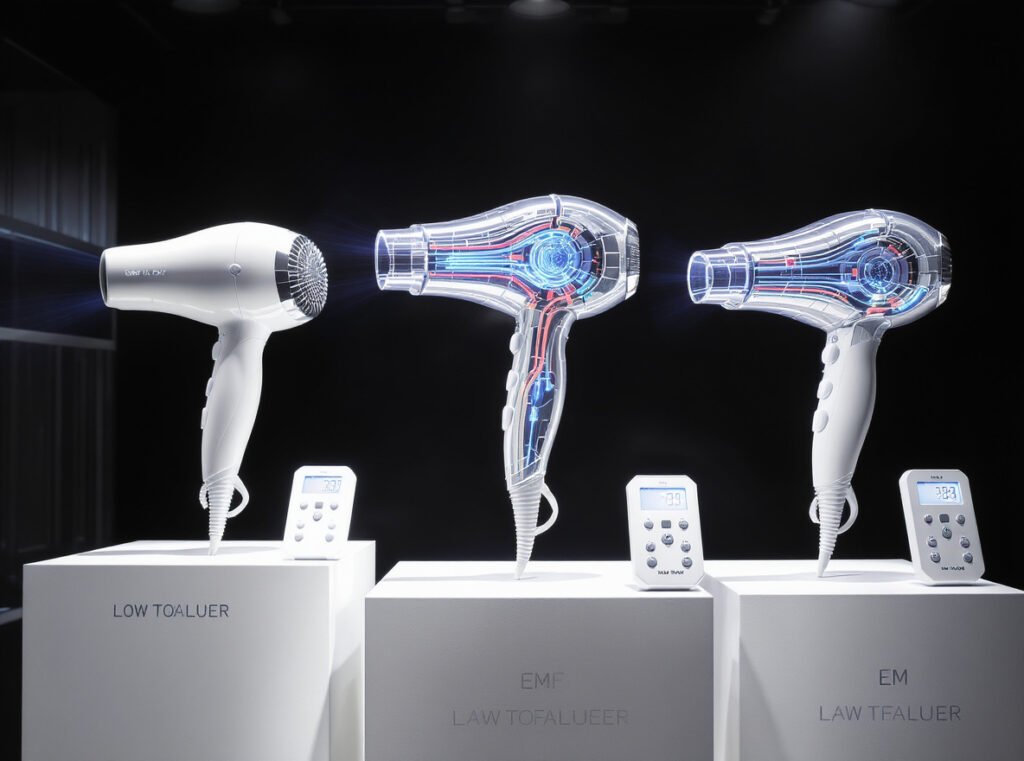
Several manufacturers have developed EMF-reduction technologies:
Shield Life EMF Freedom Hair Dryer
This model features patented dual-stage shielding technology specifically engineered to block electromagnetic emissions. The manufacturer claims 99% EMF reduction compared to conventional dryers. The device incorporates conductive shielding materials surrounding motor and heating components, redirecting electromagnetic fields internally rather than allowing external propagation.
CHI Pro Low EMF Models
Professional-grade dryers designed with EMF consciousness as a primary engineering objective. These utilize optimized motor design, strategic component placement, and quality grounding to minimize field leakage. Targeted at salon professionals seeking occupational exposure reduction.
Trezoro Ceramic Tourmaline Low-EMF Dryers
These models combine ceramic heating elements with tourmaline-infused components and low-EMF motor designs. The ceramic/tourmaline technology provides even heat distribution while the motor engineering focuses on electromagnetic field minimization.
Technical approaches to EMF reduction:
Advanced Shielding Design
Effective shielding doesn’t simply wrap components in metal—it strategically redirects electromagnetic fields using conductive materials while managing heat dissipation. Quality implementations create field paths that minimize external emissions without compromising airflow or thermal performance.
Brushless Motor Systems
Digital motor control eliminates mechanical brushes that create electromagnetic interference. These systems operate at higher efficiency, reducing current draw and naturally lowering magnetic field strength. Compact motor housings enable better internal shielding integration.
Optimized Power Electronics
Modern dryers incorporate intelligent power management adjusting current flow based on heat and speed settings. Efficient electronics reduce unnecessary power consumption that generates secondary EMF effects.
Distance-Optimized Ergonomics
Some designs intentionally modify handle placement or body length to increase natural distance between motor assemblies and user grip points. These ergonomic adjustments create measurable EMF reductions without sacrificing usability.
Performance considerations for low-EMF models:
Early low-EMF designs sometimes sacrificed drying power or extended styling time. Modern engineering has largely eliminated these trade-offs. Current-generation low-EMF dryers deliver professional-grade performance while maintaining reduced electromagnetic emissions.
Market positioning for wholesalers:
- Premium pricing justified: Advanced engineering and specialized components support 50-100% price premiums
- Targeted market segments: Health-conscious consumers, electromagnetic-sensitive individuals, professional salons prioritizing worker wellness
- Geographic opportunities: European markets and regions with high environmental health awareness
- Differentiation value: Crowded commodity hair dryer markets benefit from specialized positioning
- Professional market appeal: Salon owners increasingly consider occupational health investments
The Conason P1C high-speed hair dryer represents next-generation engineering combining performance with EMF consciousness. Its brushless digital motor delivers rapid drying performance while producing significantly lower electromagnetic field levels than conventional dryers. Intelligent heat control, aerospace-grade materials, and optimized electrical design provide the reduced-EMF benefits health-conscious markets demand. View complete specifications and wholesale pricing.
Whether serving health-conscious retailers, professional salon distributors, or specialty wellness markets, having documented low-EMF options in your product lineup addresses an emerging consumer segment. Explore our complete range or contact our team for technical specifications, EMF testing data, and wholesale pricing structures tailored to your distribution needs.
Summary
Hair dryers emit extremely low frequency electromagnetic fields measuring 60-20,000 milligauss at close range, making them among the highest EMF-emitting household appliances. While the IARC classifies ELF-EMF as a “possible carcinogen” and research shows DNA damage at certain exposure levels, no definitive health risks have been established for typical consumer use. Distance provides the most effective protection—fields drop to 1-70 mG at 12 inches. Modern brushless motor technology reduces emissions by 30-50% while maintaining professional performance, creating opportunities for wholesalers serving health-conscious markets.
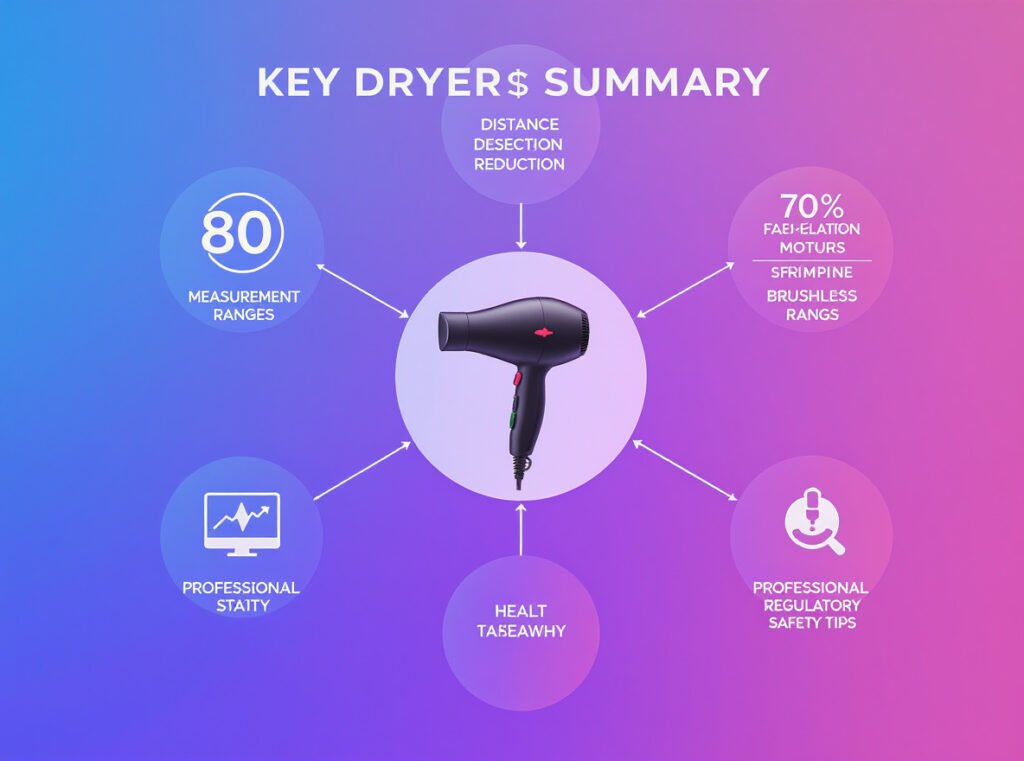
Ready to offer your customers hair dryers that combine professional performance with reduced EMF emissions? Discover how Conason’s advanced engineering delivers the power your clients demand with the peace of mind health-conscious markets require. Browse our complete collection or request detailed EMF testing documentation for your wholesale needs today.

